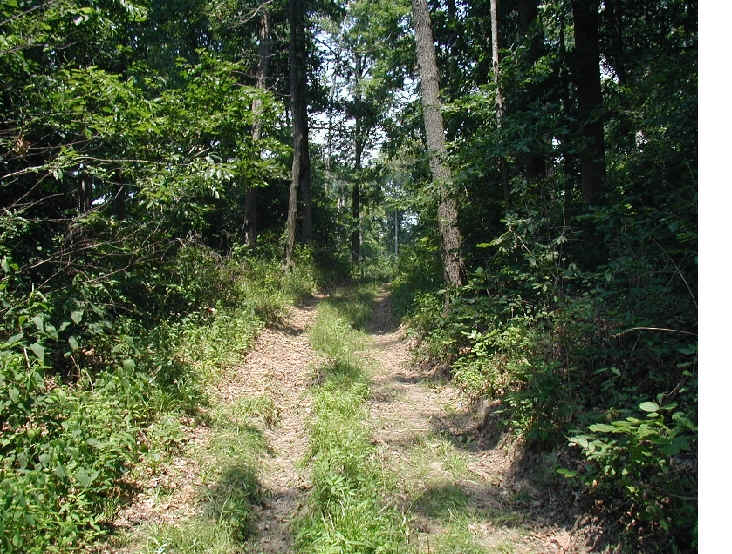
Old Ewington Road
Much has been written about the early history of our county about Ewington, the first county seat of Effingham County. It was a small hamlet and the population was most likely never above 200 inhabitants at any given time. It start was inauspicious enough, it was where the men building the bridge on the National Trail had built shanties and a store on the high ground above the river. More than likely this was around 1830 as Effingham County would not become a county until February 15, 1831. Ewington today is hard to visualize as to what it must have looked like at its formation. The hills and hollers have broken up the ground from the beginning and the old National Road bisected it from a Northeasterly to a Southwesterly direction. In addition the Vandalia Railroad which would come through it in 1870, ten years after the county seat was moved to Effingham would farther bisect it. In reading the early legal descriptions of the area the cemetery was the Southern edge of the town, the river formed its Eastern boundary, where the County Club road turns back to the West was its Northern boundary, and its western boundary was much less densely settled and may have continued on the level ground West of the creek past the over head railroad bridge just past the section 36 line into section 35. It is important that all early historians of Effingham County realize that all roads lead to Ewington. Teutopolis to the East would not get its start until 1839 and Freemanton to the West would not start until 1842. Effingham would not begin until 1859-60 with the coming of the Illinois Central Railroad. All of the early tax records would be issued at Ewington, and any matters concerning the court system would be there as well. All of the early tax receipts were written on fools' scrap paper with a quill pen. The county did not get fancy until 1856 when a printed form appeared. In 1860 the form had printed on it; Collector's Office, Effingham Co. Ills, Ewington and the the following year was the same except Ewington was replaced with Effingham.
Starting at the Cumberland Road on the Eastern edge of my parents farm the Old Shelbyville-Maysville road can be traced. In 1835, Edward Reed of Shelby County and William J. Hankins of Effingham and Crawford Lewis of Clay County were to lay out a road from Ewington North to Shelbyville, and from Ewington South to Maysville (Clay City) "as soon as labor due from the citizens of the county will admit of and the supervisors... be notified of the same." In Effingham County this was a heavily traveled road, second only to the Cumberland Road. Grain to be milled or tombstones from Shelbyville to be carried South went via this old road. Today you can stand at the Section 35 Summit Township line were it enters into Section 2 of Jackson Township and easily discern the road. Here is where they forded Funkhouser Creek and the heavy loads cut a deep roadbed into the forest floor. It is as wide as the team and wagon and about four feet deep. It is mute testimony to the volume of trade that must have passed over this Southern branch of the road. One can easily follow the old roadbed for a quarter of a mile and marvel at the conditions they must have labored under. In 1842 the present Funkhouser Road was laid out West of this road which was a more upland route and most likely a better all weather road which resulted in this section of the old Shelbyville-Maysville road to be abandoned.

The road as it still appears in Section 2 of Jackson Township today.